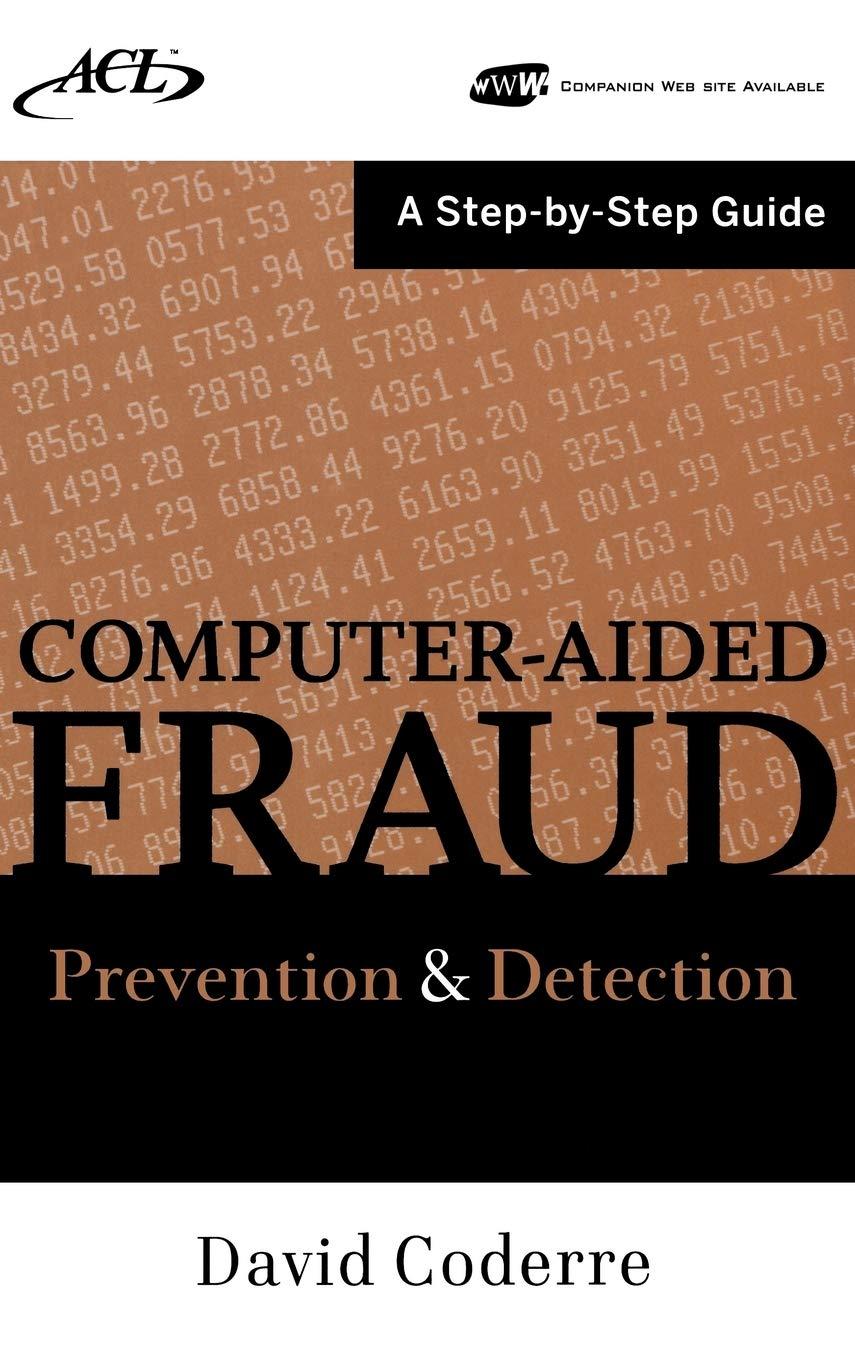Question
Part A I - Approach for Internal Control Assessment A logical approach to the assessment of internal control is to imagine what types of errors
Part A I - Approach for Internal Control Assessment
A logical approach to the assessment of internal control is to imagine what types of errors could occur with regards to each significant class of transactions. Assume a company has the significant classes of transactions listed below.
1. Credit sales transactions 2. Raw materials purchase transactions 3. Payroll transactions 4. Equipment acquisition transactions 5. Cash receipt transactions 6. Leasing transactions 7. Dividend transactions 8. Short-term investment transactions
Requirement: For each one, identify one or more errors that could occur and name the accounts that would be affected if proper controls were not specified or followed satisfactorily.
II The following are internal control weaknesses found in the purchases and payment process of your auditee, Precision Tools, Inc.:
Control Weakness 1
The purchasing clerk does not verify that the purchase requisitions (PR) are authorized by an appropriate person in the operating department but only checks that there is a signature on the document.
Control Weakness 2 Access to the warehouse is not controlled and anyone can enter and leave at any time. Control Weakness 3 The receiver does not match the bill of lading (BL) to an authorized purchase order (PO). Required: For each control weakness:
-
Describe the control risk that exist because of the weakness what could go wrong?
-
Explain whether a monetary financial statement misstatement could result because of
the weakness, and, if so, what it would be.
-
Describe in detail the impact the weakness would have on your other audit procedures.
III Control Tests and Risks of Misstatements
The questions below are taken from an internal control questionnaire. For each question, state (i) one control test you could use to find out whether the control technique was really used and (ii) what error or fraud could occur if the question was answered no or if you found the control was not effective.
-
Are blank (sales) invoices available only to authorized personnel?
-
Are (sales) invoices checked for the accuracy of quantities billed? prices used?
mathematical calculations?
-
Are the duties of the accounts receivable bookkeeper separate from any cash
functions?
-
Are customer accounts regularly balanced with the control account?
Part B Some important concepts in cost-benefit analysis are as follows:
-
Measurable benefit. Benefits or cost savings may be measured directly or may be based on estimates of expected value. An expected loss is an estimate of an amount of probable loss multiplied by the frequency or probability of the loss-causing event. A measurable benefit can arise from a reduction of an expected loss.
-
Qualitative benefit. Some gains or cost savings may not be measurable, such as company public image, reputation for regulatory compliance, customer satisfaction, and employee morale.
-
Measurable costs. Controls may have fixed costs, such as wages and equipment expenses.
-
Qualitative cost factors. Some costs may be indirect, such as lower employee morale created by over-controlled work restrictions.
-
Marginal analysis. Each successive control feature may have marginal cost and benefit effects on the control problem.
Costs and Benefits of Control Case Problem
The Ocean View Cafeteria formerly collected from each customer as they reached the end of the food line. A cashier, seated at a cash register, rang up the amount (displayed on a digital screen) and collected money.
Management changed the system, and now a clerk at the end of the line operates a calculator/printer machine and gives each customer a paper tape. The machine accumulates a running total internally. The customer presents the tape at the cash register on the way out and pays.
The cafeteria manager justified the direct cost of $30,000 annually for the additional salary and $500 for the new machine by pointing out that she could serve 4 more people each weekday (Monday through Friday) and 10 more people on Saturday and Sunday.
The food line now moves faster, and customers are more satisfied. (The average meal tab is $12, and the total costs of food and service are considered fixed.) Besides, she said, my internal control is better.
Evaluate the managers assertions.
Step by Step Solution
There are 3 Steps involved in it
Step: 1

Get Instant Access to Expert-Tailored Solutions
See step-by-step solutions with expert insights and AI powered tools for academic success
Step: 2

Step: 3

Ace Your Homework with AI
Get the answers you need in no time with our AI-driven, step-by-step assistance
Get Started


